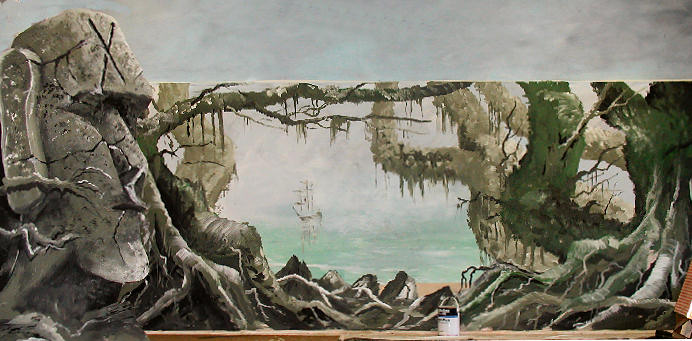TREES - Page two
How I go about painting trees and forests on Backcloths; Flats and Wings.
I then mark out my canvas in one foot squares and laboriously transfer the outlines (Just the outlines - don't get too carried away with detail) from the centimetre sketch to the canvas. I use charcoal by the way,
RESERVING OUTLINES
Now comes my "patented" reserving system.
Once all has been transferred, I lay masking tape alongside each line.
(alongside so it doesn't stick to the charcoal) I can get through
two rolls of masking tape doing this job. Doing curves is a problem but
I use small lengths and crease it to fit but I am not too worried about
the exact position at this stage. The result is I can slap, say, a sky
right over the area I want covered without having to remember where an
element is. Then, WHILST THE PAINT IS
STILL WET, I remove the tape to reveal the element's outline underneath. This system really came into its own with the trees in this "Haunted
Cove" painting.

Dick Whit, Haunted Cove. Paint tin for scale.
By the way the cloth is only seven foot high so I painted the back wall of the school stage to match. That's why everything stops at the seven foot height in this photo.